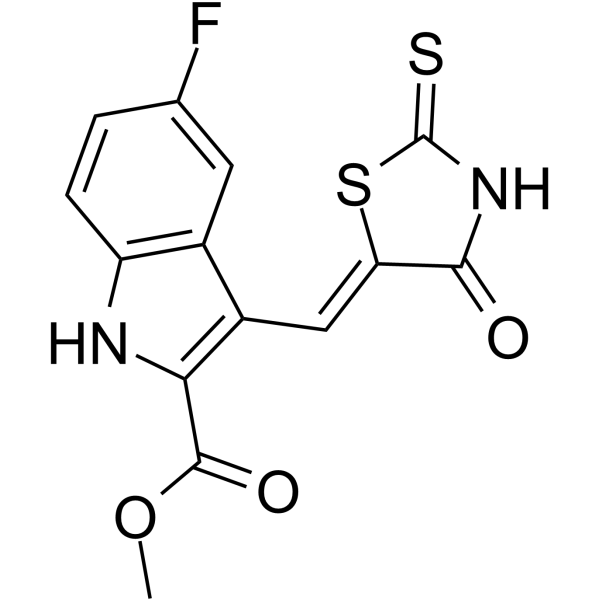2470015-35-9
| Name | Anticancer agent 43 |
|---|
| Description | Anticancer Agent 43 is a potent anticancer agent. Anticancer Agent 43 induces apoptosis by caspase 3, PARP1, and Bax dependent mechanisms. Anticancer Agent 43 induces DNA damage[1]. |
|---|---|
| Related Catalog | |
| Target |
Caspase 3 PARP1 Bax |
| In Vitro | Anticancer agent 43 (compound 3a) shows selectivity toward human tumor cells (SI50=28.94)[1]. Anticancer agent 43 (45 µM, 24 h) induces apoptosis via caspase 3, PARP1 and Bax dependent pathways in HepG2 cells[1]. Anticancer agent 43 (45 µM, 24 h) shows no effect on the transition of G1/S phases in HepG2 cells[1]. Anticancer agent 43 (0.7, 45, 55 µM) induces DNA damage in HCT116 cells (Tail DNA=16.1%, OTM=3.7), MCF-7 cells, HepG2 cells (Tail DNA=26.2%, OTM=13.2), Balb/c 3T3 cells (Tail DNA = 8.4%, OTM = 3.5)[1]. Cell Cytotoxicity Assay[1] Cell Line: HepG2, MCF-7, HCT116, HeLa, A549, WM793, THP-1, HaCaT, Balb/c3T3 cells Concentration: 0, 1, 10, 100 µM Incubation Time: 72 h Result: Showed cytotoxic action with GI50s of 12.1, 0.7, 0.8, 49.3, 9.7 µM for for HepG2, MCF-7, HCT116, HeLa, A549 cells, low toxicity towards WM793, THP-1, HaCaT, Balb/c 3T3 cells with GI50s of 80.4, 62.4,98.3,40.8 µM , respectively. Apoptosis Analysis[1] Cell Line: HepG2 cells Concentration: 45 µM Incubation Time: 24 h Result: Induced apoptosis in HepG2 cells via caspase 3, PARP1 and Bax dependent pathways. Western Blot Analysis[1] Cell Line: HCT116, MCF-7 cells Concentration: 0.7 µM Incubation Time: 24 h Result: Decreased the expression of Cdk2 protein in HCT116 and MCF-7 cells. Cell Cycle Analysis[1] Cell Line: HepG2 cells Concentration: 45 µM Incubation Time: 24 h Result: Showed no effect on the transition of G1/S phases in HepG2 cells. |
| References |
| Molecular Formula | C14H9FN2O3S2 |
|---|---|
| Molecular Weight | 336.36 |
